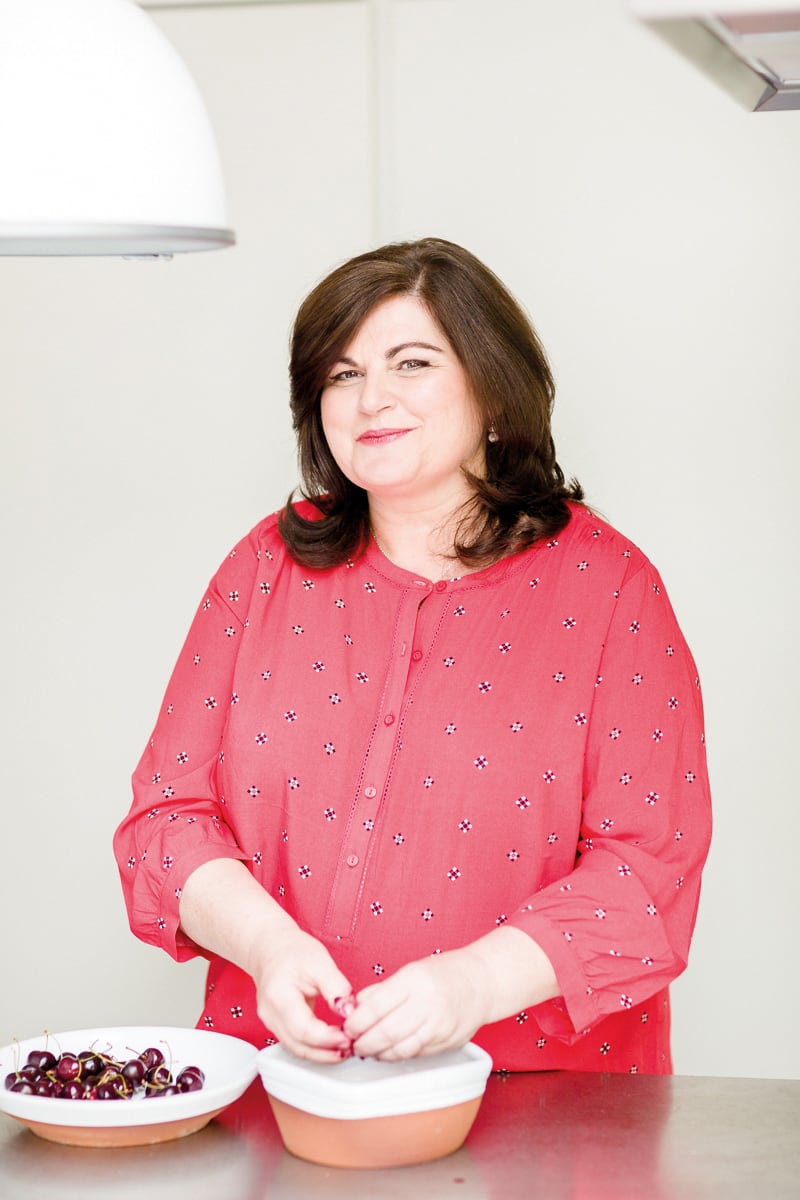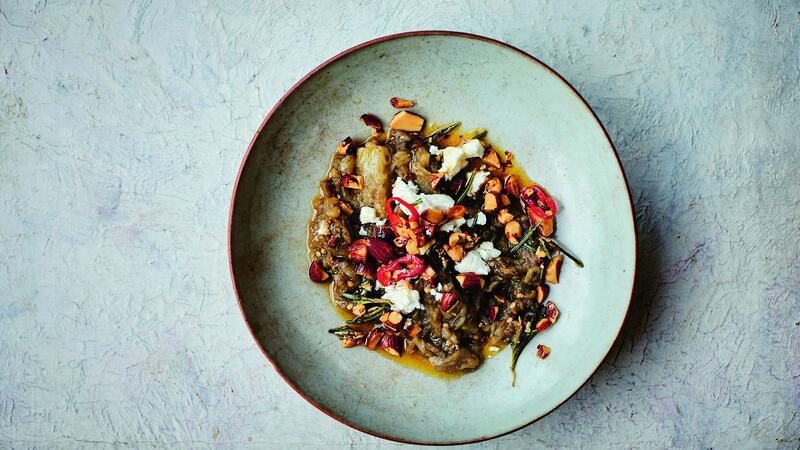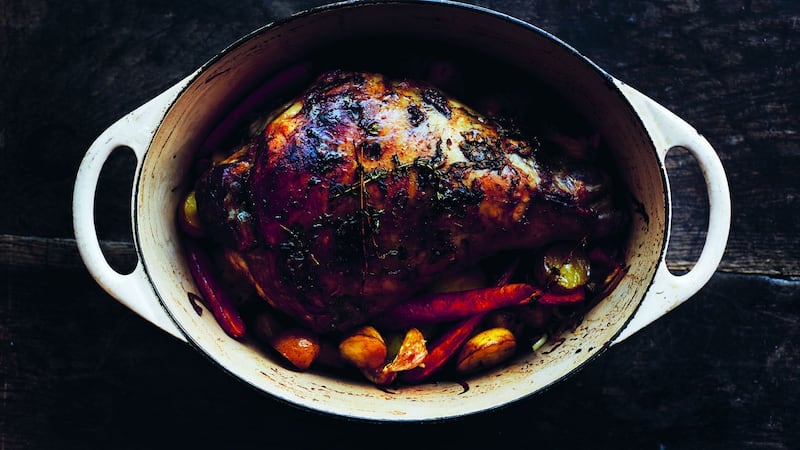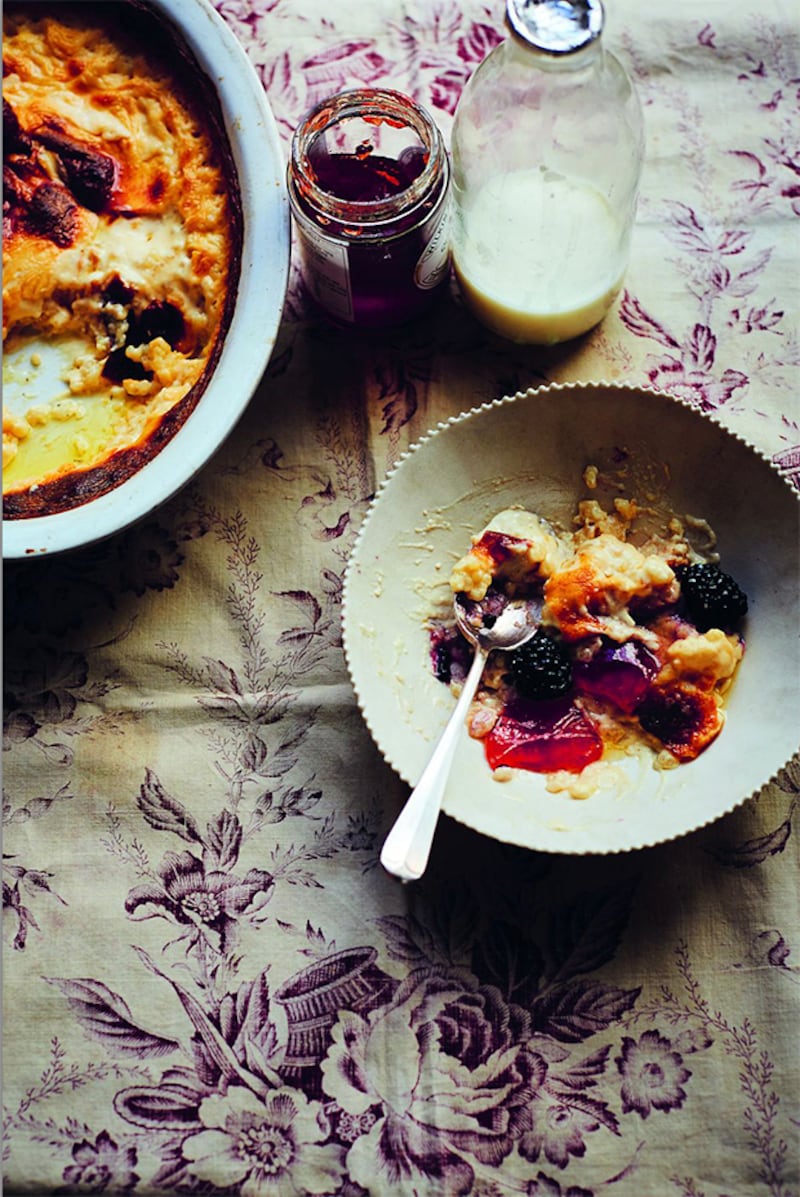Here’s a picture of what I was cooking when I had friends over for dinner in the late 1980s. Warm fish terrine – a layer of scallops set in a soft fish mousse – with beurre blanc; duck breast – beautifully fanned out on the plate – with lentils and wild mushrooms (and a puddle of strong, dark sauce); little apple tarts, the apples laid in concentric circles on rounds of puff pastry and baked at the last minute.
I was in my 20s and had no children. Still, I was spending Friday evening and all day Saturday getting dinners like this ready. I’ve been caught – by dinner guests who arrived early – still stuffing pasta with pumpkin while standing in my bra and knickers. On another occasion, I spent so long on an Austrian meal – it was the strudel, making the strudel pastry took the entire day – that I didn’t actually serve dinner until 10.30pm.

Yes, it was mad, but cooking was a passionate hobby and I wasn’t the only home cook who was trying her hand at serving demanding food. This was the way, if you weren’t a chef, you acquired skills.
I haven’t cooked such demanding meals in a long time. I do cook some difficult dishes, simply because I like the process, but the food I serve friends now is much simpler. My cooking changed when I had my first child. He cried all the time, so he was permanently on my hip. I got used to shoving trays of chicken thighs and red peppers, liberally seasoned and splashed with olive oil, into the oven with one hand.
Using the oven, where food is transformed by the heat behind that door, had a big impact on my cooking. I no longer have children holding onto my skirt, but I still depend on my oven, and not just during the week. ‘Push the boat out’ dishes, the more special ones you cook for friends at the weekend, can also be cooked in the oven. It leaves you more free – you just have to be aware of timings.
The recipes on the following pages make a glorious meal for Sunday lunch. Make plenty of the aubergine purée (people do love it). The lamb only needs a green vegetable on the side. I’d go for buttered Savoy cabbage (throw a couple of crushed cloves of garlic in there too).
The pudding is simple but use the right size of dish and be patient as it cooks slowly. Any other jelly – apple or blackberry – would work too, use whatever you can find. The same goes for the fruit – blackberries, raspberries or even stewed apples would be lovely.
ROAST AUBERGINE PURÉE WITH GOAT’S CURD, SMOKED ALMONDS, CHILLI AND ROSEMARY
Serves six as a side dish

Serve this with warm flat bread or ciabatta. If you can’t find goat’s cheese curd, a soft goat’s cheese will do.
Ingredients
3 aubergines
5 tbsp extra virgin olive oil
2 tsp harissa
Sea salt flakes and freshly ground black pepper
2 garlic cloves (not too large), finely grated
Juice of ½ lemon, or to taste
100g goat's curd or creamy goat's cheese
10g smoked almonds, roughly chopped (you want quite big bits)
2 red chillies, halved, deseeded and very finely sliced
Leaves from 1 rosemary sprig, chopped
Warm flatbread or toasted sourdough bread, to serve
Method
1. Preheat an oven to 190ºC, fan, or equivalent.
2. Put the aubergines in a roasting tin and brush lightly with some of the olive oil. Pierce each a few times with the tines of a fork. Roast for 40-45 minutes, or until the aubergines are completely soft and look a bit deflated. Leave until cool enough to handle, then slit the skins and scoop the flesh out into a bowl. Chop the flesh (it will be totally soft, you just need to break it down a bit), mash and add about 3½ tablespoons of the oil, the harissa, salt, pepper, garlic and lemon juice to taste.
3. Put this into a warmed serving bowl and scatter the goat’s curd or cheese on top.
4. Heat the remaining extra virgin olive oil in a frying pan and quickly fry the smoked almonds, chillies and rosemary together (you just want to take the rawness off the chillies a little). Pour this over the roast aubergines and serve with bread.
SLOW-COOKED LEG OF LAMB WITH SHERRY AND AUTUMN VEGETABLES
Serves eight

A big warming pot of lamb with the flavours of Spain. Don’t use sweet or cream sherry for this – you need amontillado or oloroso. Of course, the lamb is supposed to be the star here, but the vegetables are a revelation. They soak up the lamb juices as they cook, becoming really imbued with the flavour both of the lamb and of the sherry.
Ingredients
8 garlic cloves, plus 1 head of garlic, cloves separated
Sea salt flakes and freshly ground black pepper
Large pinch of saffron threads (optional)
Leaves from 8 thyme sprigs, plus 4 whole thyme sprigs
8 tbsp extra virgin olive oil
2kg leg of lamb
1 large onion, cut into wedges
300g slim, bunched carrots, or, if you can only find fatter carrots, halve or quarter them lengthways
500g waxy potatoes, scrubbed and sliced (no need to peel)
400ml amontillado sherry, plus more if needed
Method
1. Preheat an oven to 220ºC, fan, or equivalent.
2. Crush the eight cloves of garlic in a mortar and pestle with some sea salt flakes (the salt flakes act as an abrasive). Grind in the saffron, if using; it will add its flavour, and, of course, its gorgeous colour, but the dish is just as delicious without. Add the thyme leaves, pepper and olive oil, to give a loose paste.
3. Make incisions all over the lamb with a knife and slightly loosen the meat around the bone end, too. Push the garlic and herb paste down into these incisions, into the space around the bone and all over the joint.
4. Put the lamb into a large roasting tin or a cast-iron casserole; you will need to add all the vegetables later, too, so there has to be room for them as well. Season all over.
5. Roast for 20 minutes, then remove the tin or casserole from the oven. Reduce the oven temperature to 160ºC, fan, or equivalent. Put the onion, carrots, the rest of the garlic cloves, potatoes and thyme sprigs under and around the lamb. Bring the sherry to just under the boil, then pour it over.
6. Cover tightly with a double layer of foil, or the lid, and return to the oven.
7. Cook for 2½ hours, turning the lamb over about three times and checking on the sherry, too: most of it will be absorbed during cooking, but don’t let it get dry. If there are a lot of juices, remove the foil or uncover the pot 45 minutes before the end of cooking time, so they can reduce. The lamb should be cooked to softness – if it isn’t, cook it for a little longer – and the vegetables completely tender.
8. Serve the lamb with the vegetables and the sherry juices.
BAKED RICE PUDDING
Serves 4-6

I tried for years before I managed to do rice pudding properly. It basically needs a low heat and patience.
Ingredients
For the rice pudding:
50g unsalted butter, plus more for the dish
35g caster sugar
100g short-grain pudding rice
1 litre whole milk
150ml double cream
Pinch of salt
Lots of freshly grated nutmeg
Finely grated zest of ½ an unwaxed lemon
¼tsp vanilla extract
To serve:
Quince jelly
150g blackberries
Method
1. Preheat an oven to 150ºC, fan, or equivalent, and butter a two-litre baking dish.
2. Put the butter, sugar, pudding rice, milk and cream into a saucepan and bring gently to the boil, stirring to help the sugar dissolve. Add the salt, nutmeg, lemon zest and vanilla extract and return to a simmer. Simmer for about four minutes, stirring all the time, until you can feel that the rice grains have become slightly (only slightly) swollen.
3. Pour the mixture into the prepared dish and bake for two hours. By this time, the rice should be creamy and cooked but shouldn’t be dry or overly sticky.
4. As the pudding looks beautiful baked – it develops a lovely golden skin on top – take it to the table in the pudding dish and put the quince jelly and the blackberries in separate serving bowls, so people can help themselves.
From the Oven to the Table: Simple dishes that look after themselves, by Diana Henry, is published by Mitchell Beazley, £25, octopusbooks.co.uk.
Photographs: Laura Edwards

















